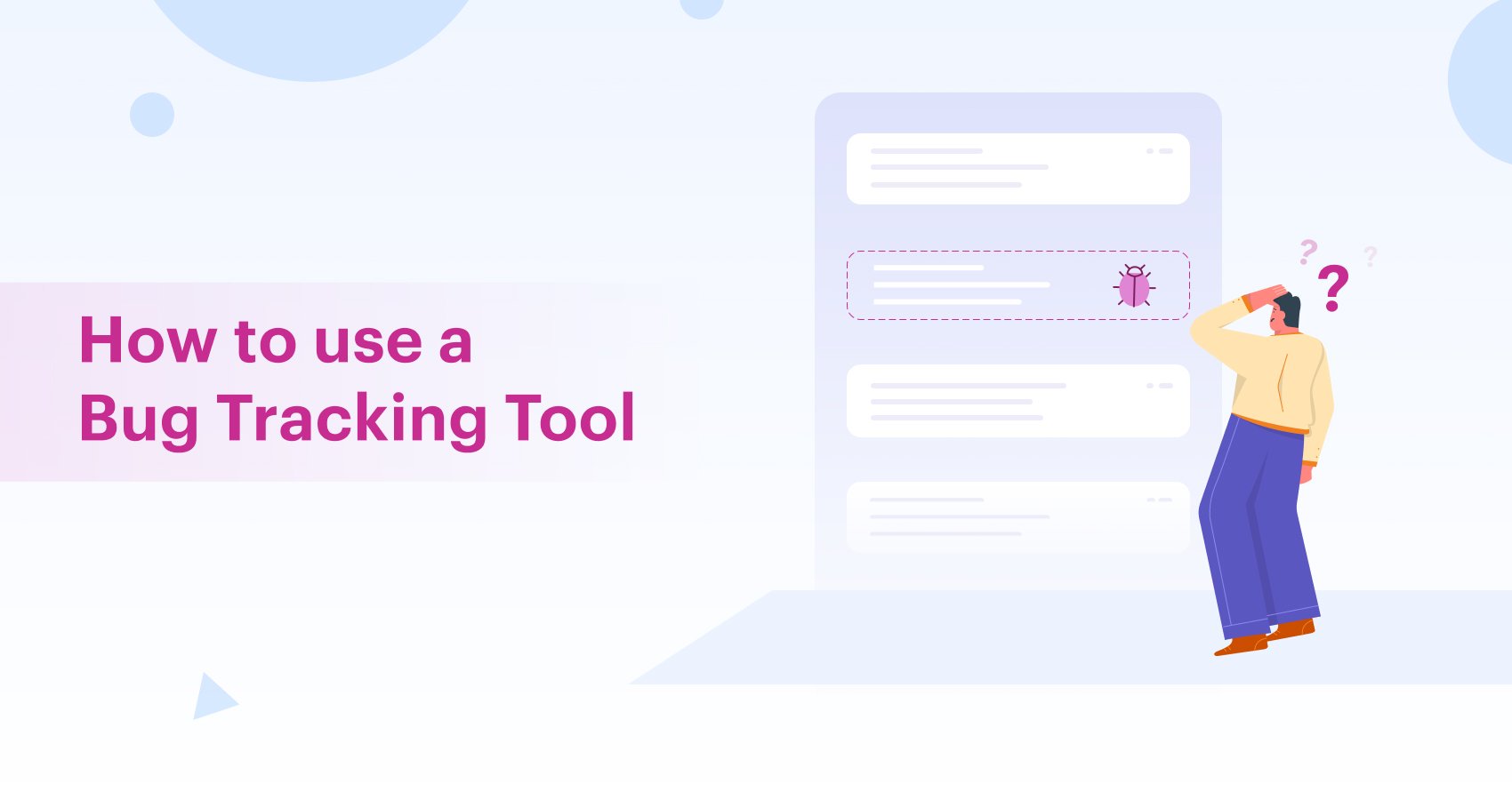Creating a bug-free product is not as straightforward as it seems. Whether it is during the testing phase or after deployment, every product development team faces bugs at some point of their development cycles. They may either be a result of inconsistencies in the development workflows or as a consequence of systemic disorganization.
While it is practically impossible to completely eliminate bugs from ever cropping up, the least product teams can do is have a system in place to minimize the time taken to resolve them, identify systemic inefficiencies, and provide customers with a product experience that doesn’t cause too much operational disruption.
But before we go into the actual process of tracking and eliminating product bugs, let’s take a look at the definition of bug tracking.
What is bug tracking?
Bug tracking refers to the process of monitoring and resolving software malfunctions and usability issues. The purpose of bug tracking is to ensure that software performs as expected. It involves identifying, reporting, and monitoring product defects from initial identification till an acceptable conclusion (typically a resolution) is reached. A good bug tracking process is efficient at resolving bugs and ensures that nothing is missed in the process of fixing identified errors.
How does the bug tracking tools workflow work?
The bug tracking process is best initiated from the onset of building the product. Bugs can be either identified during code testing (internal bug reporting) or based on user feedback after launching the product (external bug reporting). Irrespective of bug type, it is important to have a strong process in place to ensure minimal disruption. Moreover, bug tracking is a data-heavy process that can be quite overwhelming. And this is why it is important to have a feature-rick bug tracking tool that can streamline processes and improve efficiency.

Here’s an overview of the bug tracking workflow using a bug tracking solution.
Error logging
The first step in resolving product errors is to ensure that they are properly recorded using bug logging tools. Error reporting should include as much information as possible. Whether the bug is being reported internally or externally, there has to be sufficient information about the nature of the error, the cause of the problem, when it was recorded, and its implications on the system. Providing as much technical information as possible also makes it easier for testers to reproduce the error and for prioritizing the issue.
Gathering error information is easier for internal bug reporting. For external bug reporting, you need to be able to build robust forms that help to collect as much information about an error as possible from the user. This is crucial since users typically don’t know a lot about the technical details of the bugs they encounter while using a product.
Prioritizing bugs and testing
As mentioned, having sufficient information about the impact of a bug will be very helpful for prioritizing bugs. Whether a reported issue is low, normal, or high-priority depends on the impact of the bug on the most important features of the product.
You should also set realistic deadlines for each identified bug and assign them to the development teams accordingly. One of the things a bug tracking tool allows you to do is to monitor the status of each bug as it is being fixed. Updating the error status of the bug is a crucial part of the bug tracking process. Errors should be properly labeled based on their status as it moves across the bug tracking workflow.
Deploy the fixes
Bugs are said to be resolved when the testing team finds satisfactory resolution—this simply indicates that the defect in code is fixed and no more errors pertaining to the impaired function. During each stage of the process, continuous testing is necessary to ensure that the fix has indeed been implemented. A cloud-based bug tracking tool will provide an overview of every fix requested and its status in order to determine when a fix should be implemented.
Bug tracking with Kissflow Workflow
Bug tracking is an integral part of product development. The way a product organization handles bugs can make or break the product experience. And it may have an unsaid impact on the brand as well. While bugs are unavoidable, having a comprehensive bug tracking tool like Kissflow Workflow can change the way your customers experience your product.
The platform offers a great deal of flexibility to pivot, makes delegating tasks and collaboration incredibly easy, and ensures you resolve bugs in record time. What’s more? Our customizable workflows backed by the internet’s most sophisticated form builder ensures you have the right information when you need it and are able to deliver bug-free products, every time. What are you waiting for? Try Kissflow Workflow for free!